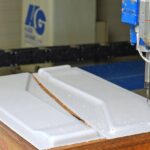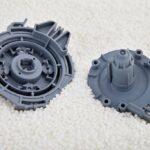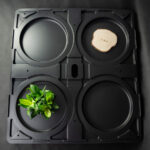Is it possible to produce quickly, precisely and without any worries about repeatability? CNC machines make what used to require the hand of a master and many hours of adjusting, happen today in an automated, controlled and predictable way. After all, CNC machines work on projects where accuracy to tenths of a millimeter counts, as well as full control over every stage of machining. But how does this technology actually work, and why should it be used in the production of plastic components?

CNC machines - how do they work?
CNC technology makes it possible to transform a digital design into a physical component with an accuracy that cannot be achieved manually. In traditional methods, the operator directly guides the tool, while in CNC techonlogy a computer takes over every operation. It is the one that controls the head movements based on a previously prepared 3D model and data generated in the CAD/CAM environment.
The machine reproduces the trajectory with a fixed depth of cut, angle or speed. Once programmed, it works identically regardless of material or number of repetitions. In practice, this means that design changes can be implemented quickly without having to rearm the entire line. A code change is all that's needed to seamlessly transition to a new batch. For companies, this is a real time-saver and greater flexibility - especially where production changes dynamically.
When was CNC technology invented?
The first numerically controlled machining systems began to be developed in the 1940s. At that time, they were still machines without computer control (NC machines), which operated based on pre-recorded numerical data. Over time, as computer science and electronics developed, the technology took on a new dimension - fully automatic and digitally controlled.
Initially, it was used only where the margin for error was out of the question: in the military, aerospace, later also in space. Today it is difficult to imagine modern production without CNC. It can be found in plants that process plastics, in automotive assembly halls, in tool shops, and where thermoforming molds or structural components are made. A technology that was once reserved for the most advanced sectors has become an everyday tool for many industries.
From the space industry to everyday life - how have CNC machines changed the industry?
CNC machines have made their way from NASA labs to auto repair shops. It may sound unbelievable, but the truth is that today everyone is using products made with this technology. Just take a look at the objects around us. The case of a phone, in which every detail must fit perfectly with the components. The aluminum frame of a laptop with perfectly smooth edges, or the suspension components of a car, which must maintain identical parameters in the production of hundreds of thousands of units. All this is created thanks to CNC technology, which eliminates the inaccuracy of the human hand and allows every movement to be perfectly repeated. CNC technology plays a particularly important role in the medical sector. Here the margin for error does not exist. Even a slight deviation can affect the comfort, health and sometimes even the life of a patient. CNC machines make it possible to produce components that perfectly replicate anatomical shapes, while maintaining high safety standards.
Importantly, today the technology is no longer reserved exclusively for the biggest players. Thanks to greater availability and software development, CNC precision is also benefiting smaller plants and companies, producing components for machinery or technical packaging.
CNC machines vs. plastic processing
The plastics sector has also undergone a significant transformation thanks to this technology. Plastics have one key advantage: they are lightweight, durable, easily recyclable and (especially important from a technical manufacturing perspective) relatively easy to process. When combined with CNC machines, they become a material with enormous design and economic potential.
CNC machines are now an integral part of manufacturing processes in, among other places:
- creation of plastic panels, covers and enclosures For the automotive, railroad and heavy industry,
- production molds for vacuum thermoforming, that is, where perfect shape reproduction and tool strength count,
- execution thick-walled technical components used in logistics and automation,
- precision machining inserts and packaging dividers, whose geometry must be matched to specific components.
At Geo Globe Poland, we use CNC machines to process engineering plastics, molds and parts that must meet the highest dimensional and strength standards. Wondering if CNC is the right solution for your project? Contact us.
Do you have a design challenge? Contact our team - we will advise and propose a solution tailored to the conditions of your project.
Follow us on social media
You may also be interested in:
- Understanding CNC machines: What should you know about their operation and benefits?Is it possible to produce quickly, precisely and without any worries about repeatability? CNC machines make what used to require the hand of a master and many hours of adjusting, happen today in an automated, controlled and predictable way. After all, CNC machines work on projects where accuracy to tenths of a millimeter counts, as well as full control over every stage of machining. But how does this technology actually work, and why should it be used in the production of plastic components?
- The use of plastics in industryDo you know what the bottle of the iconic Family Shampoo has in common with the engine cover on a Tesla Model 3? Well, more than you might expect. Plastics today play a key role in modern industrial processes - from everyday objects to high-tech components used in automotive, aerospace and construction. Their versatility and innovation are second to none. ...
- Plastic Moldings and Thermoformed Extrusions: Advantages and Applicability in Various IndustriesIt's hard to find an industry today that doesn't need a precision-engineered, lightweight yet durable plastic component. From delicate blisters in pharmaceuticals, to transport trays on automotive lines, to ESD anti-static extrusions to protect electronics during manufacturing and logistics, thermoformed extrusions are popping up everywhere.
- Vice President Dobrochna Kochanska an official member of the Business Center ClubVice President Dobrochna Kochanska an official member of the Business Center Club

















